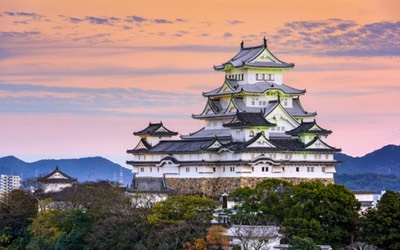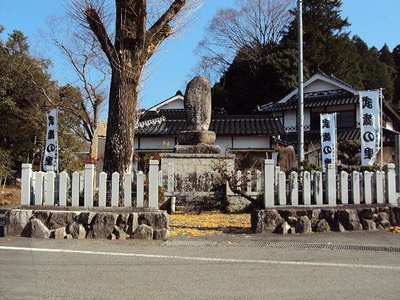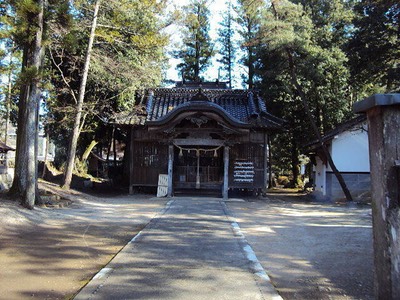Miyamoto Musashi's birthplace according to the Mimasaka-setsu, or the Mimasaka tradition, is the small village of Miyamoto. It was originally situated in the Yoshino district of the province of Mimasaka. Today, it is part of the village of Ōhara, in the district of Aida, in the province of Okayama.
In Musashi's time the village of Miyamoto was hidden among the mountains, with only a few traffic arteries to connect it to the rest of Japan: the Yoshino River and the Inaba Kaidō, the ancient highroad that runs from town of Tottori on the Sea of Japan to the magnificent castle town of Himeji.
Miyamoto village was guarded by Takeyama castle, which stood on the eponymous hill overlooking both Miyamoto and Hara village. Master of Rikan castle when Musashi was born was Shinmen Munetsura, the brother of Musashi's natural mother, Omasa, who had died when giving birth to Musashi. Today not a stone of Takeyama castle remains, but looking up from Miyamoto, one can vividly imagine how splendid it must have looked on its lofty crest.
One of the major attractions of Miyamoto village is, of course, Musashi's Birthplace. Sadly, the large Miyamoto yashiki, or mansion, with its thick thatched roof in the kayabuki tradition was destroyed by fire during the middle of the twentieth century. But a nice description of the house has been preserved in the Tōsakushi, a topography compiled in 1815 by Masaki Teruo, who served Matsudaira Yasuchika, the daimyō of the Tsuyama fief in Mimasaka, as an advisor and instructor in the Kōshū-ryū, a school of martial arts connected to he house of Takeda Shingen:
三十間四方、石垣は寛永十五年天草一揆のとき、公儀より命令があって取崩すと云々。大木の槻の木がある。周囲二丈七尺の太さである。荒牧大明神にある巨木と雌雄であるという。
Miyamoto Musashi’s yashiki occupies an area os some three thousand square yard. It is said that, in the fifteenth year of Kanei [1638], at the time of the Shimabara Rebellion, the stone wall that surrounded it was demolished by order of the authorities. It stood in the shade of a tall zekova with a circumference of some twenty-seven feet, which can compete with the old tree on the premise of the Aramaki Daimyō shrine.
Today, the Aramaki Daimyō shrine is called the Sanomo shrine, while a new house has been erected at the former site of the Miyamoto yashiki once stood, but a memorial stone in its garden still marks the place where it once stood.
Any queries of remarks? Launch or join a discussion at our new FORUM



